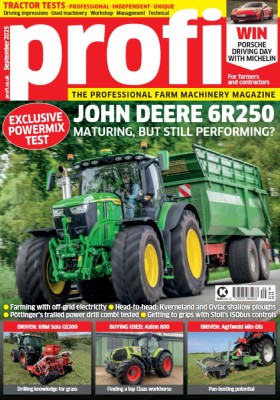Weighing around 17 tonnes, and costing roughly the same as a combine harvester, power to the latest version of Case IH’s Austoft 8000 self-propelled sugar cane harvester comes courtesy of a six-cylinder FPT Cursor 9 (max. 394hp). Available in single and two-row versions, in the right conditions a two-row A8000 (wheeled) or A8800 (tracked) machine harvests as much as 120tph, cutting stalks into 25-30cm lengths known as billets. The latest version is available with a couple of nifty factory-fitted options. Called SmartCruise, the first reduces fuel consumption to just 0.7 lit/tonne of cane billet. The second, AutoTracker, ensures the two rotating discs automatically cut cane stalks at a pre-set height, helping to reduce cane losses by as much as 720kg/ha. Founded in Australia, Austoft was one of the first companies to successfully make a sugar cane harvester. Case bought the Queensland-based business in 1996, and transferred production to Brazil in 2005. Exact numbers of machines built are off-limits, but the 2,000th self-propelled sugar cane harvester left the Brazilian plant just three years later in 2008. The big markets are in Africa, the Middle East, Australia and Brazil, and it is not uncommon for some growers to have 15,000-100,000ha of sugar cane and anything from a handful to 50-60 harvesters.
120tph capacity for latest sugar cane harvester
Weighing around 17 tonnes, and costing roughly the same as a combine harvester, power to the latest version of Case IH’s Austoft 8000 self-propelled sugar cane harvester comes courtesy of a six-cylinder FPT Cursor 9 (max. 394hp). Available in single and two-row versions, in the right conditions a two-row A8000 (wheeled) or A8800 (tracked) machine harvests […]






